4 Ways to Preserve Herbs At Home

4 Ways to Preserve Herbs At Home
Every year without fail, I wait until the last possible moment to harvest and preserve everything out of our garden, including my herbs.
Sure, I harvest things throughout the season to eat or enjoy fresh, but when it comes to preserving (as with many other things), I’m sort of a last-minute kinda gal.
But this inevitably leaves me overwhelmed come summer and fall when I’ve got baskets and baskets full of food that needs to be preserved all at once. I end up wanting to pull my hair out and questioning why I’m such a glutton for punishment.
Late summer and early fall is go time around here when it comes to preserving, so this year I’m trying to take a more proactive approach and actually preserve things as they come on and are ready in the garden (what a novel idea, right?).
Last year I waited until August or September to harvest most of the herbs out of our garden. This meant that I was faced with preserving multiple baskets full of herbs at the exact same time that I had multiple baskets full of tomatoes, peppers, cucumbers, beans and fruits of all kinds. Since all of the fruits and veggies are much more of a priority (since they’ll rot or be destroyed by fruit flies if I don’t preserve them ASAP), the herbs had to take a back seat. Of course, this meant that I ended up drying all of them and then putting the dried herbs (whole and still on the stem) into baskets. There they remained for, oh I don’t know, six months or so until I finally stripped all of the leaves off the stems and put them away in jars in my pantry.
By the time I did this, they had collected dust and I had even forgotten what some of them were. It is hard to tell the difference between dried oregano and dried lemon balm when you mix them together in a basket and then don’t look at them again for months!
In the end, we had to toss some of them away and finally the rest did get put away. But, no sooner did we put those jars in the pantry, this year’s herbs are already coming on strong in the garden!
So, I’m doing my best to get ahead of the game this year by preserving my first batch of herbs in the spring, well before any of the summer fruits and vegetables are ripe for the picking.
The best time to harvest herbs
Spring is actually the best time of year to harvest herbs because this is the time of year when they’re young and tender. They haven’t had time to dry up or flower and go to seed. They’re in their prime! And that’s exactly when you should be harvesting them.
As for time of day, morning is the best time to harvest herbs because that’s when their essential oils are most concentrated in their leaves and flowers. Try to harvest herbs early in the morning before the sun is directly on them.
Related: 13 Culinary & Medicinal Herbs to Grow At Home
How to preserve herbs from the garden
Herbs are one of the easiest things to preserve because you don’t need any special skills or knowledge or really do anything special to preserve them. If you just let them sit on your counter, they’ll dry up and you can preserve them dried!
However there is a right and a wrong way to dry them to avoid issues like mold and loss of flavour and medicinal properties. And there are more ways than just drying to preserve herbs for year-round use.
The method of preservation I choose depends on what type of herbs I’m preserving. For example, I dry almost all of our oregano because we use it most in its dried form. We add dried oregano to pizzas, pastas, meats and veggies.
However, I tend to freeze chives and parsley. I prefer to enjoy these herbs fresh, and freezing them preserves them in a form that’s as close to their natural state as possible.
It just depends on what herbs I’m preserving and how I intend on using them later. So, I do have to be intentional and think ahead about ways to preserve my herbs so that nothing goes to waste.
There are actually a surprising number of ways to preserve herbs. If you have your own favourite methods or recipes that aren’t mentioned, here, please add them in the comments below! But for now, here are a few of my favourite ways to preserve herbs out of our garden to enjoy all year long.
Watch: How we’re getting a head start on preserving season with these easy herb recipes
Four ways to preserve herbs
* Be sure to wash herbs first to remove any bugs or dirt, then pat dry before continuing with the following preservation methods.
Related: 8 Ways to Preserve Food At Home
1. Drying herbs
Drying is probably the most obvious and familiar of all preservation methods when it comes to herbs. Pretty much any herb can be dried and then used for culinary purposes, homemade herbal tea, medicinal preparations and infusions, and adding to homemade bath and beauty products.
But there are right and wrong ways to preserve herbs when drying them.
Hang herbs to dry
The easiest and most low-maintenance way to preserve herbs is by hanging them upside down to dry. All you need to do is give them a wash and pat them dry, then bundle handfuls of herbs together and secure with an elastic or some twine and then hang to dry in a well-ventilated area out of direct sunlight. Once the herbs are dry, remove the leaves and/or flowers from the stems and store in jars in your pantry.
It’s important to hang them upside down when drying because doing so helps to concentrate and preserve the essential oils in the leaves, which preserves the flavour and medicinal properties of the herb.
Dry herbs on a screen or in a dehydrator
You can also lay herbs out on screens or use a dehydrator to dry them. Just make sure that whatever you do you spread them out so that they’re well ventilated because if any moisture gets trapped in the leaves your herbs may start to mold and you’ll have to discard them.
Do not crumble or grind up the leaves! Remove them from the stems but keep the leaves and flower buds whole whenever possible. This will help to preserve the essential oils as well because it reduces the amount of surface area that oils can escape from.
When it comes time to use your herbs, at that point go ahead and grind or break them up as small as you need them, right before using.
2. Freezing herbs
The next most popular (and easiest) ways to preserve herbs is to freeze them. There are a few ways to freeze herbs, from freezing them just as they are (yup, you can just chop ‘em up and throw ‘em in Mason jars or freezer bags), to making pesto and a bunch of options in between.
Here are some of my favourite ways to preserve herbs for the freezer:
Chop and freeze
I like to chop up tender herbs like parsley, chives, dill, basil and green onions and toss them in a freezer bag as-is. This method preserves them as close to their natural state as possible. I then add them to soups, stews, sauces, eggs and more throughout the year.
Freeze in ice cube trays
Many people like to freeze herbs in ice cube trays. They fill their ice cube trays with herbs (tender herbs like basil and parsley are popular choices) and then cover with water or oil (usually olive oil). Then add those herb cubes to all sorts of dishes throughout the year.
I used to use this method to preserve basil, but now I usually just chop and freeze basil or use it to make pesto, which brings me to my next point…
Make pesto
Basil is the most common herb for making traditional pesto, but pesto can be made with any tender herb or leafy green. Why not make parsley pesto or a mixed herb pesto with parsley, basil and chives? I also like to make arugula pesto, radish top pesto and even garlic scape pesto (especially garlic scape pesto!!) Then place pesto in jars, ice cube trays or freezer bags and pop ‘em in the freezer until you need them!
Make compound butter
This is another one of my favourite ways to preserve herbs. All you need to do is chop up some fresh herbs and mix them with softened butter, then roll into a log and wrap with plastic wrap and store in the freezer until ready to use.
You can use any herbs or combination of herbs you want, but my personal favourites are garlic butter with chives, rosemary, garlic and thyme butter (this is my favourite to use over roasted vegetables in the winter), and parsley, chives and mint (so yummy to roll corn in, spread on biscuits or add to eggs!)
Click here to get the full recipe and freezing instructions as well as more herb combos for making your own compound butter.
Make freezer meals
This preservation method is often overlooked, but you can always use your herbs and produce to actually make meals and then freeze them for later. Use basil and oregano on homemade pizza or add herbs to homemade lasagna and then freeze, unbaked for a quick meal later. Or add to soups, stews, broths and sauces and freeze.
3. Preserving herbs in salt (or sugar!)
One of the oft-overlooked ways to preserve herbs is by using salt. Salt has been used to preserve food for millennia because it’s excellent at dehydrating food and protecting it from bad germs. And it’s delicious too;)
You can either rough chop your herbs and then put them in a jar and cover/mix them with salt, or you can blend the herbs and salt together in a food processor and then lay the mixture out to dry on a tray or in a dehydrator, then blend again (it will clump together) and store the dried, blended herb salt in a jar in your pantry.
You can also preserve herbs in sugar using the same method as the salt, however I’ve found that if there’s any moisture left in the herbs at all, the sugar draws it out and can turn syrupy. In fact, this is exactly how I make my tree tip syrup in the spring!
When preserving herbs in sugar, either place chopped or whole herbs in the sugar or blend up and spread out to dry and then blend again and place in jars to store. However, make sure herbs are completely dry before placing the lid on your jar so that any moisture can evaporate and escape. Mint, lemon balm and lavender are all good candidates for herbed sugar.
4. Making herbal infusions
My last way to preserve herbs and also preserve the flavour and medicinal properties of them is by making an infusion.
An infusion simply means you’re infusing some sort of liquid solvent with herbs (in other words, you’re extracting the properties of the herbs using a liquid solvent).
You can use any edible or medicinal herbs to make an infusion, and you can use just about any liquid solvent to extract the properties from the herbs, including alcohol, honey, vinegar, oil (there is a danger of botulism when preserving herbs in oil so use caution), or even water! Yup. The herbal tea you drink every night is an infusion:)
I like to make mint and lemon balm syrup by infusing a homemade syrup (made with sugar and water) with lemon balm and mint. Check out this video to see how I do it. (I’ll also demonstrate a bunch of my other favourite ways to preserve herbs!)
I also like to make all sorts of culinary and medicinal infusions like peppermint extract, thyme-infused honey, fire cider and elderberry syrup.
What are your favourite ways to preserve herbs??
Surely there are more ways to preserve herbs that I’ve missed here! I’d love to know what your favourite ways are to preserve herbs and how you use them after! Let me know in the comments below 🙂
For more in-depth information on growing and using herbs for culinary or medicinal purposes, be sure to check out the current (May 2021) issue of Modern Homesteading Magazine: the Herb Garden issue.
*** Subscribe here for FREE and get the latest issue delivered right to your inbox! ***
If you’re reading this after May 2021, you can still subscribe to get the latest issue free, or become a member for just $7.99/year and get access to all past issues, including the Herb Garden issue (May 2021), the Herbal Medicine issue (November 2019) and so much more!
Become a member and get unlimited access to our entire library of issues!
Wishing you homemade, homegrown, homestead happiness 🙂



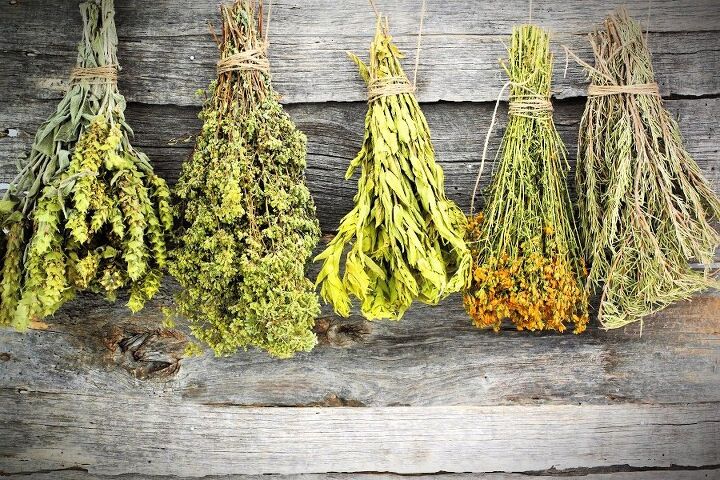





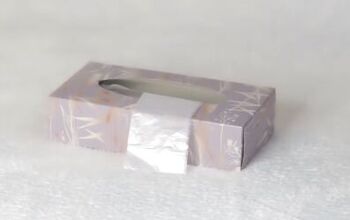








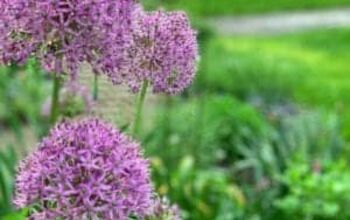




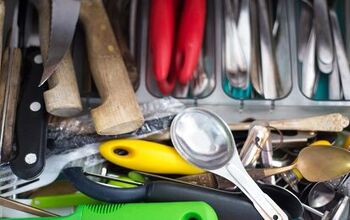
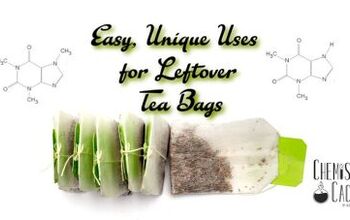

Comments
Join the conversation
I always dry my Italian parsley in the oven, crush it up and put up in spice jar(s). Started making pesto last year, but didn't make much. But I still have it in the garden, so if it is still good I am going to make it and freeze in small jars. Just didn't think to do that before and I freeze broth, and other sauces all the time. I also have a nice size Sage plant in a pot that overwintered nicely last year. Thought it wouldn't make it through our PA winter, but it was covered with tarp and came back beautifully. Would like to use for gnocchi oilve oil sauce, but not sure if dried leaves would work. Have you used the dried leaves like this?